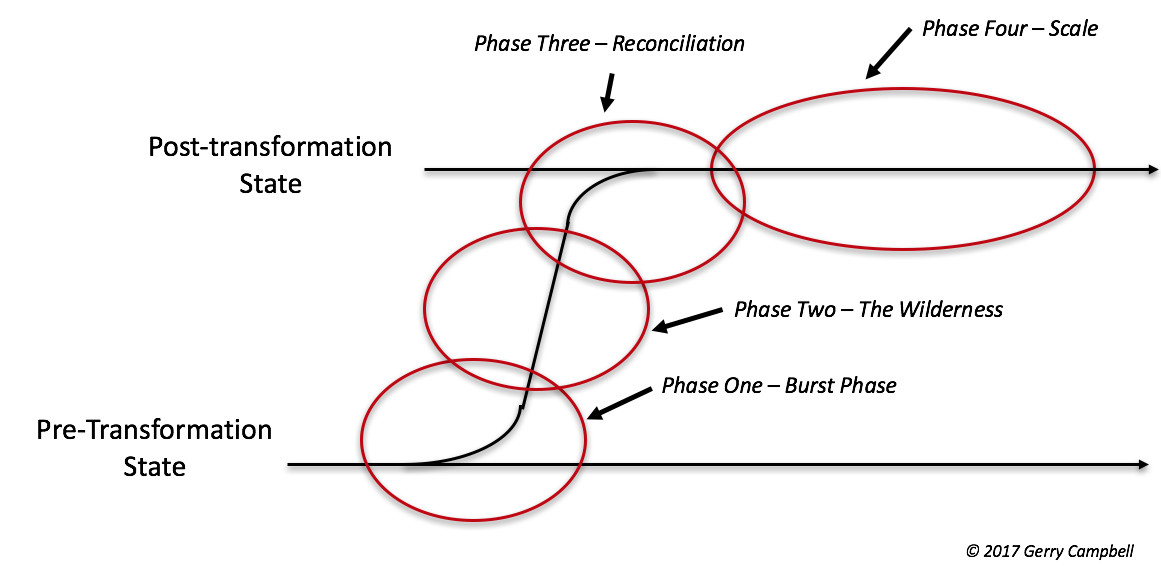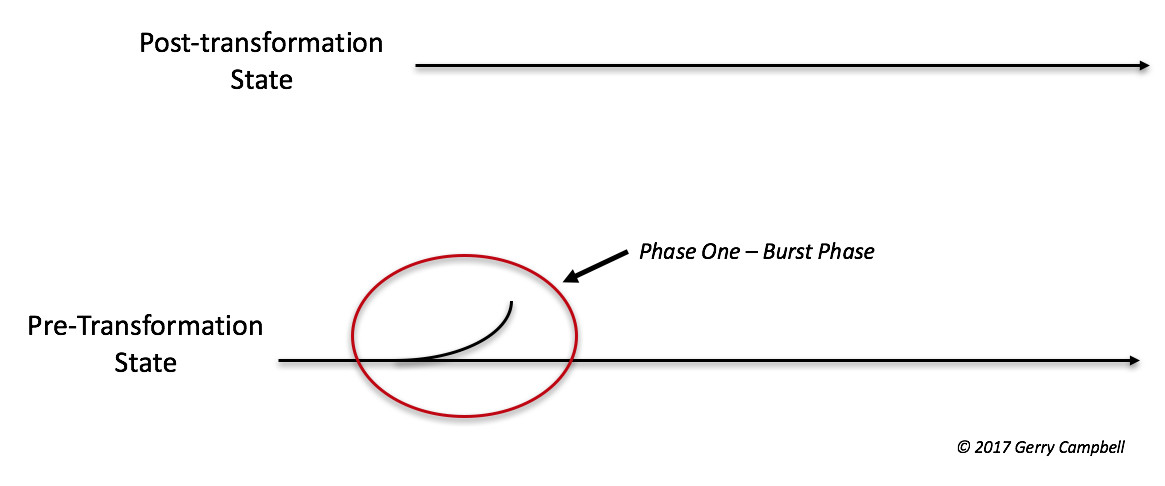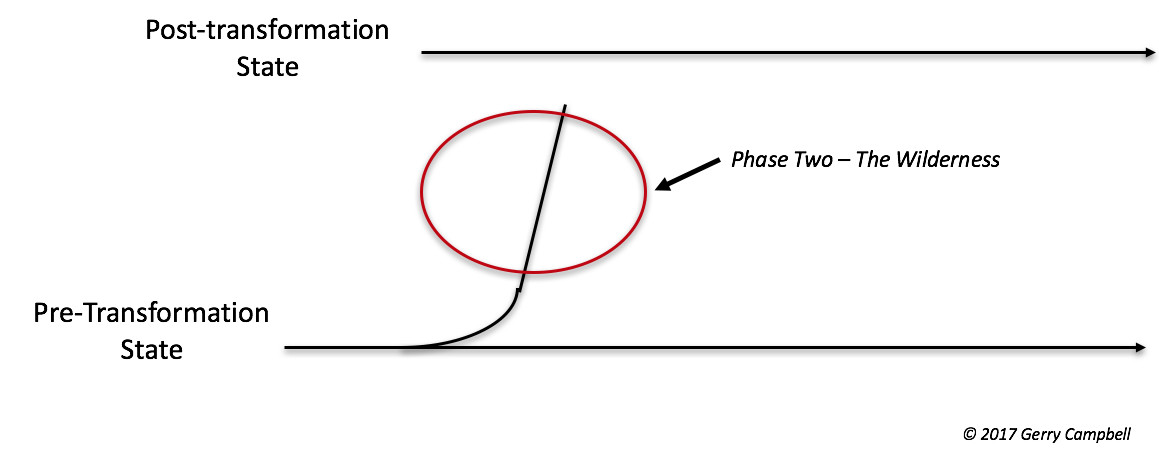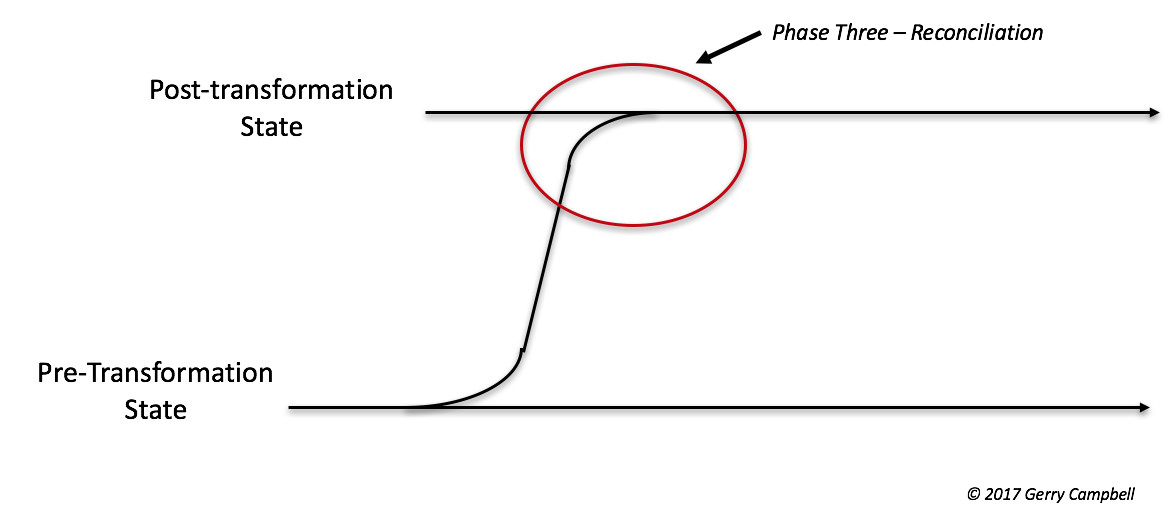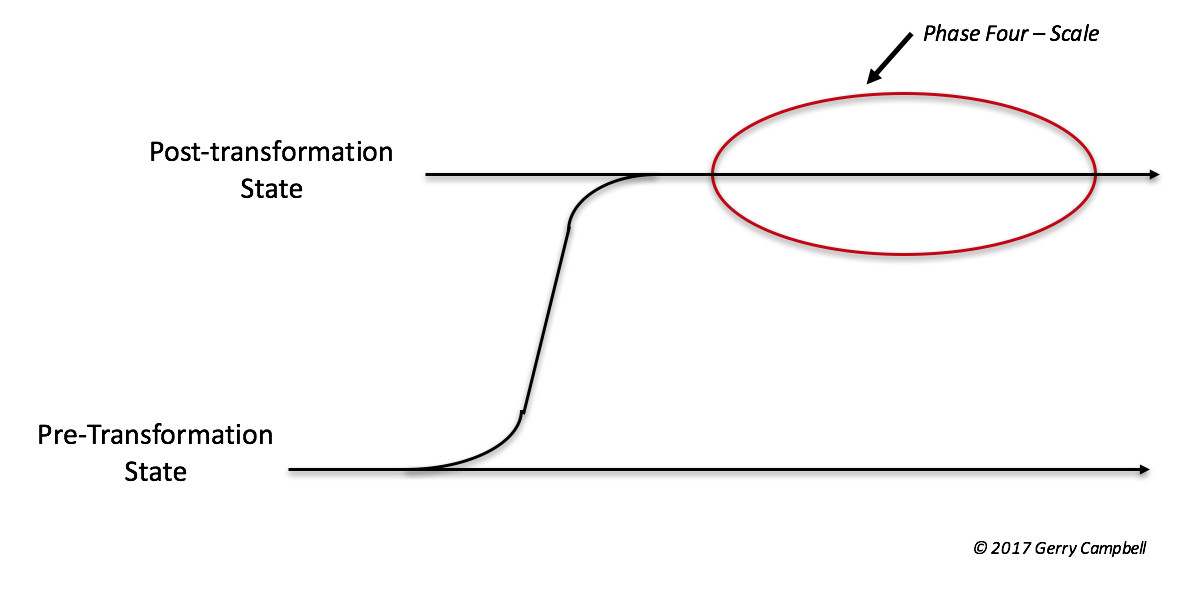Transformation: The Answer to Disruption
There is a playbook for disruption. It’s taught in entrepreneurship classes and practiced in startup accelerators around the world. Endless strategies have been designed to attack the older, weaker players and separate them from their customers.
And, strangely, there isn’t much written about how to respond to true disruption. Where’s the playbook?
As a leader at many companies with recognizable brands over the past ~25 years, I have seen a pattern repeat itself over and over:
- New innovative business is created,
- it attains product/market fit,
- a corporate machine is built around the profit center,
- connection to the customer is lost.
Then, while the machine fine-tunes itself a threat appears (competitor, innovation, etc.) and the company doesn’t realize until too late that it’s been separated from its lifeblood.
As a business leader I have seen this pattern so frequently I intuitively created a strategic response. From my experience, a mental model has emerged.
This mental model has now been refined and I’d like to share it.
TRANSFORMATION IN FOUR STEPS
If you believe there is a dramatic change happening to your business, there’s good news and bad news. The good news is that you can respond. It is definitely possible to regain lost ground with customers. The bad news is that you’re in for major change.
It takes clarity, commitment and confidence to lead through a disruptive attack.
Here are the four stages of transformation to use as a guide:
Phase One – Burst
Transformation starts with a breakout group. There are many reasons for this, but simply stated, you can’t truly innovate within the core business. The pressures of profitability and daily operations will squeeze any innovation out to the point where it’s a secondary priority, if it’s addressed at all.
So start off right, create a standalone group that operates by its own rules and has the latitude to innovate, unencumbered by the processes, self-imposed limitations and culture of the existing, challenged business.
Think of it this way, your attackers don’t have those restrictions. Don’t limit yourself.
This breakout group should be freed up from the daily responsibilities and solely dedicated to pursuing the new form of business. There should also be freedom of technology, processes and resources in order to get as fresh of a start as possible. Remember, you will be competing with challengers who don’t have a corporate overhang or encumbrances.
The biggest risk at this phase is in misunderstanding the significance of a pending disruption and/or under-resourcing the response. If you see it coming, act quickly. Free up the most creative thinkers you have and take off the restraints.
Phase Two – The Wilderness
The new team’s job is to pave the way for a new business. You’ve freed them up to pursue this, and now they are going to struggle. Why? First of all, creating a new business from scratch, by definition, introduces uncertainty into the company. It is not likely, or even possible, to nail a new business approach on the first try. There is exploration, there is trial and error.
This phase takes patience. It is exactly the same process a startup goes through as it tries to find its way with a new product.
In fact, that’s exactly what this phase is about: finding product/market fit.
How do you know you’ve achieved it? There’s a lot written about this, but my simple rule is that you know who your customers are, you know where to find them, you know what it costs to acquire them and you have predictable margins.
The risk in this phase is in being impatient with the uncertainty inherent in finding new markets and products. You can (and should) put pressure on the team to move with urgency. However, if you lose patience with the uncertainty and accelerate a “good enough” solution to market without the appropriate financial fit, your new business will be built on sand.
Phase Three – Reconciliation
You launched a team, they wandered around in the wilderness and ultimately emerged with a solution that can transform your business and move the company forward. You know you have product/market fit because it’s behaving predictably in terms of acquisition and financial performance.
Now you have a problem: You have two very different businesses. At best they are unrelated and only compete for resources. More likely, though, there is a direct conflict in terms of culture, success criteria, risk/reward and overall financial productivity. In simplest terms, the existing business is bigger, more predictable and more efficient. The new business is smaller, runs by different operational rules and employs a different leadership style. And in most cases it doesn’t deliver the scale of revenue required to carry the weight of the company.
This phase is called “reconciliation” for a reason. It’s now the job of leadership to take the best of the old business and transition it to the line of business with the new customer alignment.
The challenge is to keep the essence of the new business and scale it up by applying the traditional business’s resources. The complicating factor is that there are real people, with real jobs, impacted. A lot could be written on how to do this, but the simple idea is to keep the momentum of the innovation while bringing everyone on board. Not everyone makes it.
Netflix had an interesting experience with this in that the teams that previously led success in the DVD shipping era of the company had to be dis-invited from the leadership meetings regarding the streaming subscription service. It was too hard for the DVD teams to fully transform their approach to line up behind digital distribution. Netflix’s action was decidedly bold, but sometimes that’s required.
The risk in this phase is that, by the very nature of creating a breakout group, you create tensions within the organization. If successful in creating a new business, you may have two entire companies under one “roof.” The task, when reconciling, is to emerge with the company’s teams all working together. If the team is poorly reconciled, a rift will remain, causing poor performance and ongoing inefficiency.
Phase Four – Operational Scale
Teams are now moving together or integrated in the new direction. If you’ve been successful, your company has renewed energy around its future. But there’s still a complication. It’s most likely that the new direction is not as profitable as the old one.
If your previous phases were productive, the new business will have a greater net present value due to its potential, and the previous business will be lower as it declines. However, there is often an understandable reticence because revenues in the new businesses are not as robust.
In almost all cases, this process of shifting customers and revenues to a new mode of business takes a while. In the case of Adobe, when they sunset the boxed-software model and introduced the subscription model, it took 2-3 years. As the result, ADBE went from a ~10-year plateau in the low $30’s/share when subscriptions were introduced in 2012 to a current $180/share. This is an extraordinary story, but it shows what’s possible.
Going Forward
It’s impossible to capture the nuances of 25 years of experience in ~1000 words. And it’s equally impossible to take such a complex, technical topic and go into details in a single post. There is a lot to understand.
But what is captured here is a working, practical leadership model for navigating one of the most prevalent and vexing business challenges faced today: Disruption.
Please let me know what you think. Would love to hear thoughts and experiences. Or if you would like to go deeper with this please reach out.
(Reposted from my feed on LinkedIn)


